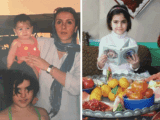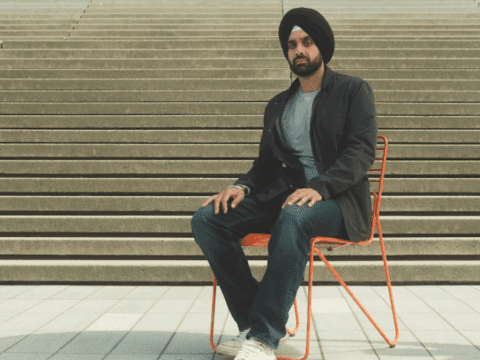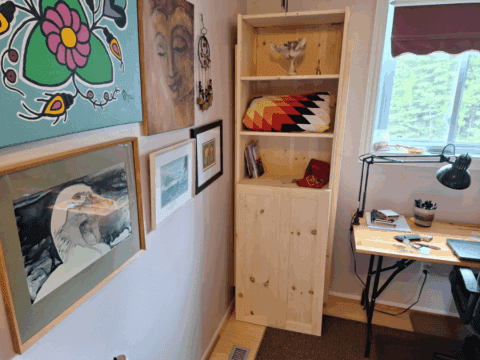I rode home on a high horse. I was an idealistic 19-year-old when I had my first taste of the developing world through a program called Canada World Youth. Three-and-a-half months living in the mountains of Colombia with a poor family convinced me that the Save-Easy with its 50 brands of breakfast cereal in Dartmouth, N.S., was, indeed, a den of inequity. Looking back now, an unmentionable number of years and a few overseas trips later (including a doozy of a trip with three children through Africa), I can see that I was a bit preachy and more than a little annoying the first time I transitioned from living with people who had way too little, back to living with people who had way too much.
I still remember with a pang when my generally easygoing dad told me that he wished I had never gone to Colombia, presumably because I was so obnoxious when I returned. I knew everything about everything and was always happy to share. So, how do you share your story without alienating friends, neighbours and the person who has the bad luck to sit beside you on the bus when you return from an exposure visit full of zeal and armed with 678 digital photos of your trip?
You may unsubscribe from any of our newsletters at any time.
Remember: You’re probably not actually Mother Teresa
Ben Land is CEO of ExitWest, a new Canadian organization on the “voluntourism” landscape that takes executives to the developing world for a team-building experience while they embark on a community project to benefit the poor. Humility upon your return is key, says Land. “A spirit of humility needs to accompany you wherever you go. As humble as you were going into that orphanage in Guatemala, you need to be humble walking into the church youth group to talk about the orphanage in Guatemala,” explains Land. “You have now accomplished something that a lot of other people are intimidated by, but you know that anyone can do it.”
Land says that sometimes it’s the people who did not go on the trip who think you are really hot stuff for going in the first place. “Break down the misconceptions of this Mother Teresa mantle that people place on you.” You can do this by being honest and real about your experience, which probably included a few “remind me why I am here?” moments.
I vividly recall one of those as I battled a raging headache while painting roof tiles for a church under the hot Honduran sun, or bumped on a bus down a rocky road in Uganda to meet two of the kids we sponsor. I was no hero. I was just another cranky, sweaty Canadian with a sore behind in danger of forgetting how privileged we were to be there in the first place. Dare to share those moments as well.
And remember, especially if your trip was lengthy, that your family and friends have stories to share as well.
Heather Fraser of Toronto served in El Salvador in 2005 as overseas personnel for The United Church of Canada. “Don’t forget that, yes, you have changed, but so have other people,” reminds Fraser. “You can get so wrapped up in the fact that you’ve changed that you forget that other people’s lives, although they may not seem so excitingly different, have also changed.”
Honour the people in your lives by asking them about what they’ve been doing while you’ve been busy “saving the world.” Your own stories will be received even better if you are listening as well as talking.
Prepare for the question: So, how was your trip?
This is a tough question to answer succinctly. Fraser says to assume that people “genuinely want to know, so the question is how to answer them in a way that makes them feel engaged.”
Land goes with the “know your audience” approach. You will answer that question one way when your nephew asks it, and another way when you are doing a presentation for the UCW who hosted a tea to raise money for your trip.
If it’s a casual conversation, Land suggests you might answer like this: “My trip was huge, and it changed my perspective on a lot of things. What are you interested in?” Learn what intrigues your listener and deliver those kinds of stories. “Find out what they can relate to. Try to make it a conversation, rather than a presentation.”
Don’t let their reactions — which can range from high engagement and multiple questions to glazed eyes and stifled yawns — get you down. “It doesn’t change what you’ve experienced,” says Fraser. “It’s wonderful when you can share with someone who seems interested, but don’t feel discouraged if someone doesn’t validate your experience. It doesn’t make it less of a changing experience.”
Avoid: Glazed eye syndrome
When you do share, though, think short stories with high impact. T.J. Grant works with World Vision Canada. His job is to help youth who have had life-changing experiences overseas keep living a changed life back here in Canada. Grant teaches travellers how to tell their stories in a way that does not cause listeners’ eyes to glaze over with the look that cries out, “For the love of all that is good and holy, are you going to stop talking soon?” Youth are encouraged to write out three different versions of their favourite stories: a one-minute, a five-minute and a 20-minute version, which includes a few more personal anecdotes to illustrate an important lesson. “You can ask the person who asks about your trip which version they want,” explains Grant. That gives the listener the power to decide and you the confidence to know that you are not boring them to tears.
Fraser says to keep it lively and close to home by always looking for the connections in your stories: “When you tell your story by showing how different things are, it’s only helpful if you bring it back to how similar we are. If you bring it back, then you have something to work with.”
Choose: Only your very best photos
The blessing of digital cameras is that you can take so many photos! The curse of digital cameras is that you can take so many photos! Choose wisely for your conversations and presentations.
“Have as many people photos as possible,” says Land, “but know who the people are. Don’t show a couple of kids sitting in a wheelbarrow on the worksite unless you know their names, their grades and how they helped out on the site.” Land adds, “When developing your presentation, try to keep the actual content broad enough that you could use the same slides in a Grade 5 class and at a church senior’s Bible study. Use the same slides and then tell different stories. People want to know the story behind the photos.” At the end of the day, says Land, “That is the power of the experience — the human interactions, the relationships that get built, not the buildings that get built.”
Fraser agrees: “Show the strengths and the stories that people can relate to because it helps to break down the barriers.”
And the very last thing you want after a life-changing, barrier-busting experience in the developing world is to construct new barriers between you and the people who love you. “Show that spirit of gratitude for the experience you have had,” says Land. And remember that “from the inside, you can never fully explain it. And from the outside, they can never fully understand it.” Until, that is, they experience the joy and strength of the developing world themselves, with the encouragement of someone who has already been there — you.
This story first appeared in The Observer’s April 2009 issue with the title “So, how was your trip?”















